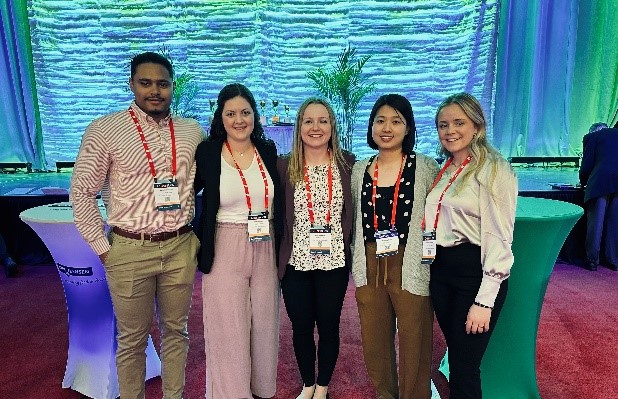Scientific publishing plays a crucial role in advancing our shared knowledge as well as individual dairy science careers. Do you have any tips or advice for navigating the world of scientific publishing?
I would say my biggest piece of advice comes from one of my PhD advisors (Federico Harte, PhD), and it is to tell a story with your writing. Specifically, within a manuscript, I find it useful to keep a consistent organization within each subsection, ensure transitions between sentences flow naturally, and check that each sentence is stated in a concise, nonrepetitive format. This may mean rewriting sentences (and even paragraphs) multiple times. However, if you are lucky (like me), you will find some joy in the process, as it is almost like a (very challenging and time-consuming) puzzle.
As a section editor for the Journal of Dairy Science, I see a lot of articles in which the main message gets lost in a sea of information. Take another look at your article before you submit it; reorganizing it into a logical flow of concise statements will improve the article and aid in the interpretation and application of your work.
Collaboration and mentorship often shape a scientist’s journey in the profession. Do you have mentors or colleagues who have positively impacted your career? How have they influenced you and your approach to dairy science?

Caption: At CheeseCon
in 2023 with four students
who competed in the Collegiate
Dairy Products Evaluation
Competition. (Left to right)
Rafael Larosiliere, quality
assurance specialist at
Dairyfood USA; Katherine
Petersen, R&D dairy applications
at Kerry; Grace Lewis;
Yihong Deng, PhD student at
Cornell; and Ashley Gruman, MS
student at Penn State.
(Credit: Grace Lewis)
I will start with my PhD advisors, Federico Harte and John Coupland, PhD. As I progress in my career, I constantly see the influence these two had on my development as a young scientist. I would not be where I am (or who I am) without them. Also at Penn State, I learned about the sensory evaluation of dairy foods from Kerry Kaylegian, PhD. I have had numerous opportunities come from this training, and I now coach my own team to compete in the Collegiate Dairy Products Evaluation Competition.
Additionally, I have felt incredibly supported by my colleagues at the Dairy Innovation Hub at UW–River Falls and UW–Madison. As an early-career scientist, I cannot fully express my gratitude for the opportunities that have been provided by these collaborations.
In your experience, what aspects of dairy science are the most fascinating or enjoyable?
This question is so easy to answer: milk foam. In the morning, I froth my coffee (with milk, of course) as much as possible just so I can fully appreciate the science of milk foam.
Here’s the background: milk foams (not whipped cream) are primarily stabilized by milk proteins. In milk with some fat, the temperature of the milk changes the milkfat crystalline state, and this can be detrimental to the formation of the foam. For a good time, try foaming whole milk at room temperature and comparing it with milk foamed at other temperatures. In milk, we have a system that seems so simple, but it is actually remarkably complex.
To make this more interesting, we are able to manipulate this system using novel processing techniques and ingredients. In my research, I take the complexity of this nutritious system and try to apply it in innovative, value-added applications.
Have your read any scholarly articles recently that you found particularly interesting?
I find the majority of papers “particularly interesting!”
We know authors have many options for which journals they submit to. What benefits do you see to publishing in a society journal, such as JDS Communications?
For original research studies, JDS Communications publishes articles with narrowly focused and specific objectives. These manuscripts have a strict word limit, so they must be concise and organized to answer a specific question. Although it is a relatively new journal, JDS Communications is designed to communicate research in a format that is accessible to a variety of audiences, which should aid in citation potential and industry application.
Strengthening our shared dairy science community means celebrating more than just our professional selves. Outside of work, what activities or hobbies bring you joy?
My major obsession is CrossFit, and I recently got into participating in CrossFit competitions. I also love walking my dogs, hiking, backpacking, kayaking, and staying active. My husband and I recently took a trip to Isle Royale and backpacked across the whole island (~50 miles). The scenery was absolutely remarkable.